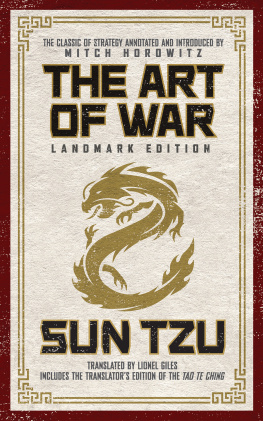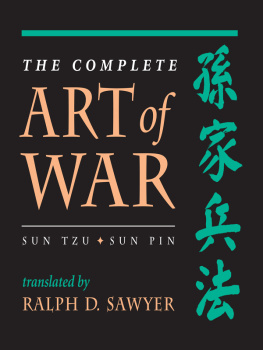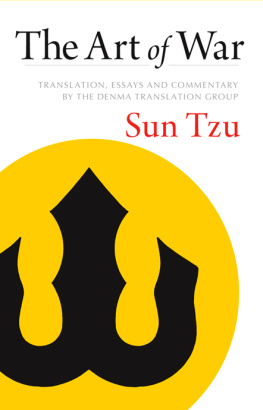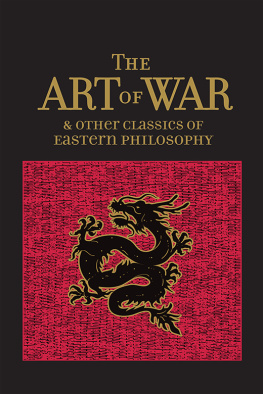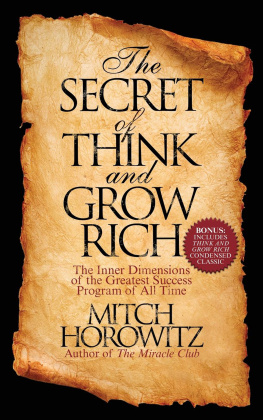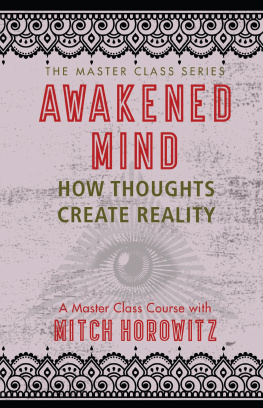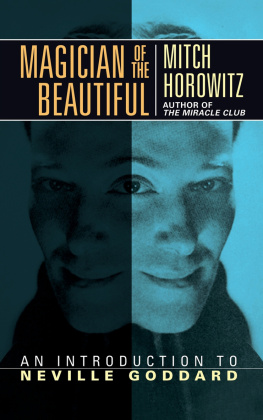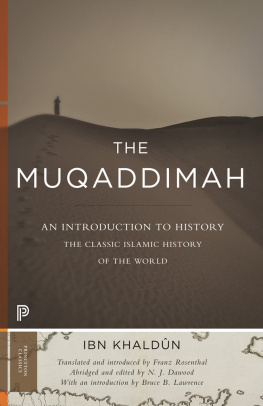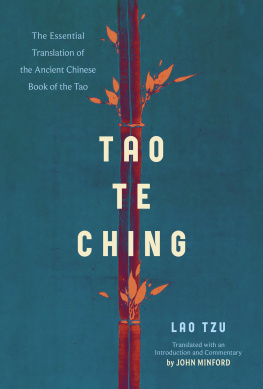Contents
Page List
Guide
THE ART OF WAR
LANDMARK EDITION
THE ART OF WAR
LANDMARK EDITION
The classic of strategy annotated and introduced by Mitch Horowitz
SUN TZU
TRANSLATED BY LIONEL GILES INCLUDES THE TRANSLATORS EDITION OF THE TAO TE CHING
Published 2021 by Gildan Media LLC
aka G&D Media
www.GandDmedia.com
THE ART OF WAR LANDMARK EDITION. Copyright 2021 by G&D Media. Tao Te Ching translation by Lionel Gilles was originally published 1905. The Art of War translation by Lionel Gilles was originally published 1910. The Art of War Landmark Edition published 2021. Introduction and notes copyright 2021 by Mitch Horowitz. All rights reserved.
No part of this book may be reproduced or transmitted in any form, by any means, (electronic, photocopying, recording, or otherwise) without the prior written permission of the author. No liability is assumed with respect to the use of the information contained within. Although every precaution has been taken, the author and publisher assume no liability for errors or omissions. Neither is any liability assumed for damages resulting from the use of the information contained herein.
Front Cover design by David Rheinhardt of Pyrographx
Interior design by Meghan Day Healey of Story Horse, LLC
Library of Congress Cataloging-in-Publication Data is available upon request
eISBN: 978-1-7225-2196-7
10987654321
Contents
Introduction
Nature and Conflict by Mitch Horowitz
Tao Te Ching
(The Sayings of Lao Tzu)
Individual tables on content appear at the start of each section
Introduction
Nature and Conflict
By Mitch Horowitz
The violent and stiff-necked die not by a natural death.
LAO Tzu, Tao Te Ching, translated by Lionel Giles
The Art of War is essentially a Taoist work. Its core principle is to blend with the natural order of things. That is the books approach to conflict and friction as it is to restoration and maintenance of peace. I believe that the books outlook can be distilled to five basic points:
1. The greatest warrior prevails without fighting; rightness (or the Tao), preparation, and advantage make conflict unnecessary.
2. Beware the devastation of conflict; war should never be pursued lightly.
3. Be eminently watchful: know your enemy, know yourself, know your terrain. Fight only if victory is assured.
4. When you strike, concentrate fury and power at your enemys weakest point.
5. When conflict ends, quickly restore peace. Protracted conflict destroys victor and vanquished alike.
Although The Art of War is written from a martial perspective, its five ideals are Taoism itself. They counsel the reader to function like naturethe authors definition of rightness: Life tends towards generativity and reproduction in all its expressions; but in order for nature to perpetuate itself there exist innate ruptures, such as a forest fire clearing away old brush; if left untouched, the brush would eventually overrun and choke the forest. Nature is not spiteful or protractive. It works by direct and unimpeded means. The forest fire first takes dead leaves, branches, and underbrush. It eventually abates. And life returns. As an oceanographer once put it to me: Life is what planets dothe ecosystem of a planet or solar system (gravity itself abets life) creates homeostasis. Seen in a certain light, that is an expression of the Tao, or Way.
There is no simple manner of identifying the author of The Art of War. Nor is it entirely clear that there existed a single author. The book is traditionally attributed to Zhou dynasty general Sun Tzu (c. 544 BC496 BC), an honorific title meaning Master Sun.
The legendary warrior is said to have recorded his insights around 500 BC, although some historians argue for a later date. Beyond parables, very little is known about this warrior who does not formally appear in ancient Chinese historical literature until soon after 100 BC, four centuries following his recorded death. In this sense, Sun Tzu is somewhat like the Hellenic sage Pythagoras (c. 570 BC495 BC), with whom, if certain records are accepted, he shares contemporaneous ancestry, and whose life, like Master Suns, is known to us from writings that followed the philosophers death sometimes by centuries.
It is likewise important to understand that other primeval writers and sages, including Homer and Socrates, did not possess clearly demarcated historical identities, although consensus holds that such figures may have existed either as single personas or composites. During the Renaissance, for example, scholars and translators marveled at the Greek-Egyptian writings attributed to Hermes Trismegistus, or thrice-greatest Hermes, a Greek title for Egypts god of intellect, Thoth. Hermes Trismegistus was considered a psychopomp of great antiquity. Later scholarship demonstrated that the writings attributed to Hermes, or the Hermetica, actually dated to late antiquity, probably in the decades immediately following the death of Christ. The authors name was attached to these works by multiple scribes who, in a practice not uncommon in antiquity, affixed the byline of a mythical or venerated figure to their writings in order to lend them greater gravity or authority. That is not a mark of inauthenticity. The Hermetic literature is likely a retention of very ancient oral tradition written down in expository form in the closing centuries of Ancient Egyptian civilization. In that sense, the Hermetica is a vital expression of humanitys primeval insight regardless of authorship.
In the modern West, we are accustomed to view writing as the work of distinct authors with personal insights. But, as alluded, that model did not necessarily prevail among early-ancient philosophers and historians. In both the East and West, the more common practice was for scribesversus authors with fixed personasto reproduce the outlook of philosophical schools, military orders, governments, and religious castes. That is the process by which Scripture itself was written. Hence, in terms of the history of ideas, it matters less who wrote The Art of Warif there was a single authorthan the historical integrity of its verses. In that vein, the Taoist naturalism and deep antiquity of The Art of War make the short work perhaps the most enduring and widely read expression of Ancient Chinese philosophyor possibly of any branch of philosophyof our era.
Given the books vast number of modern reproductions and its ubiquitous appeal, The Art of War may, in our generation, be even more widely read than the similarly mysterious and almost certainly older work on whose insights it rests: the Tao Te Ching, attributed to the mythical 6th century BC sage Lao Tzu, meaning Old Master. If search-engine results are any guide, The Art of War has significantly more eyes on it than its ancestral work.
It is not difficult to understand why the younger book may have surpassed the older in readership. Although the Tao Te Ching soars on philosophical wings, The Art of War, at times similarly lyrical, gets straight down to business: its aim is not, or not solely, numinous and naturalistic insight but hardcore victory.

